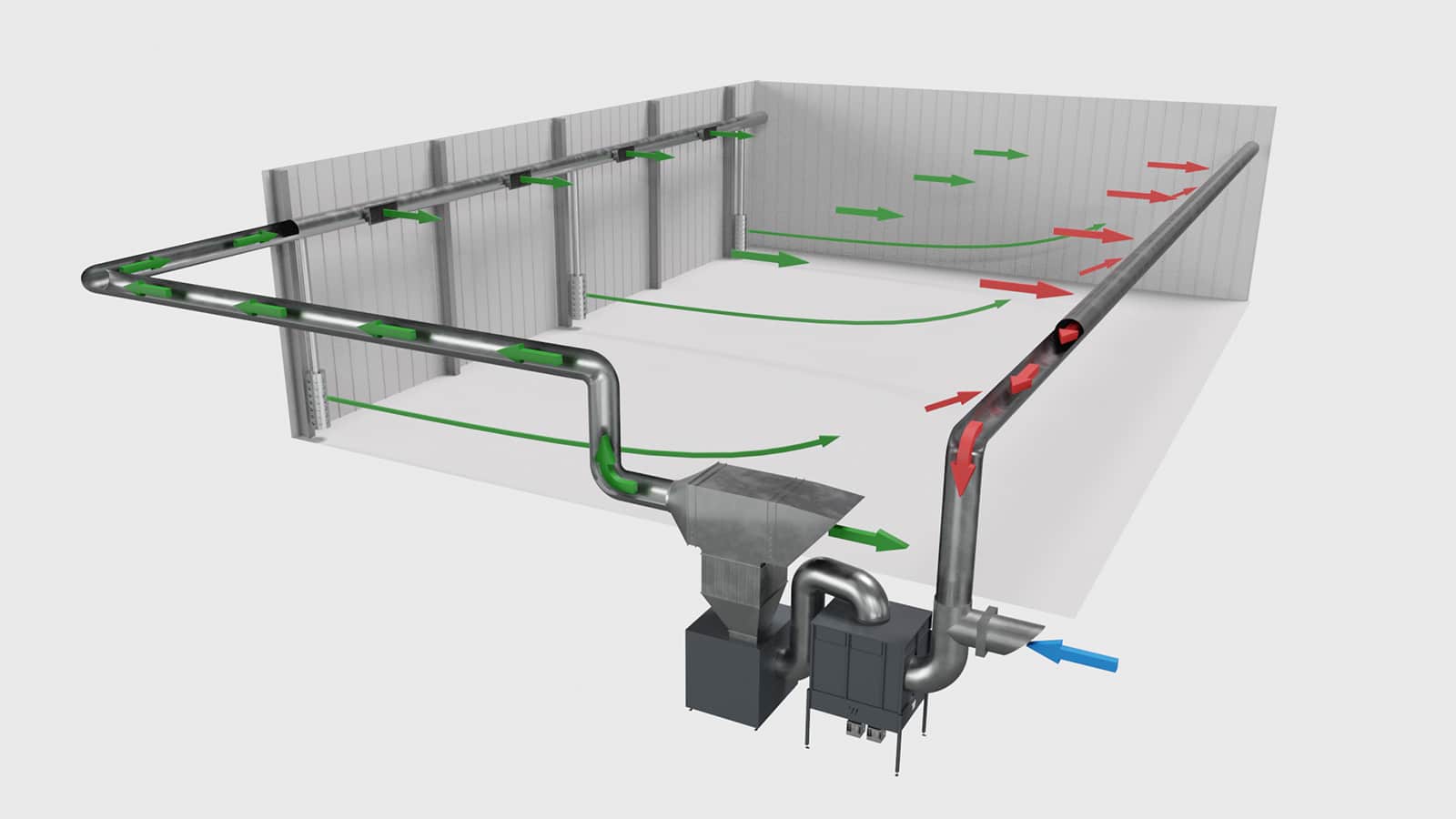
Dry separator or wet separator
Dry deduster or wet separator?
Whether a wet separator or dry deduster is the ideal filter system for your application depends on the nature of the substances released, the quantity and the physical properties of the dusts or fumes. Is the dust dry, moist, sticky, flammable, explosive or carcinogenic? Are sparks generated during machining? How to capture and how many workstations / machines to exhaust? These factors determine whether wet or dry extraction is the most effective and economical system for your process and whether legal requirements can be met.
Fields of application of extraction systems
In industry, grinding, polishing or welding generates hazardous substances that must be extracted and filtered from the air to protect the workforce and comply with legal regulations. Filter systems such as deduster, wet separators or welding fume filters filter these emissions from the air in production halls by using different filter media (e.g. cartridge filters, water, HEPA filters). Extraction technology and filter area depend on dust quantity, air volume and the chemical properties of the separated particles.

Functionality dry separator
Dry separators are used for the extraction and filtration of dry or sticky dusts as well as chips, granules, fibers, flakes or lint. Particles are separated by several filter stages, and a certified HEPA H14 filter is also installed for carcinogenic and fine dusts. For processes with combustible dusts or flying sparks, a radio sensor with automatic extinguishing device is used and further fire protection measures are taken.
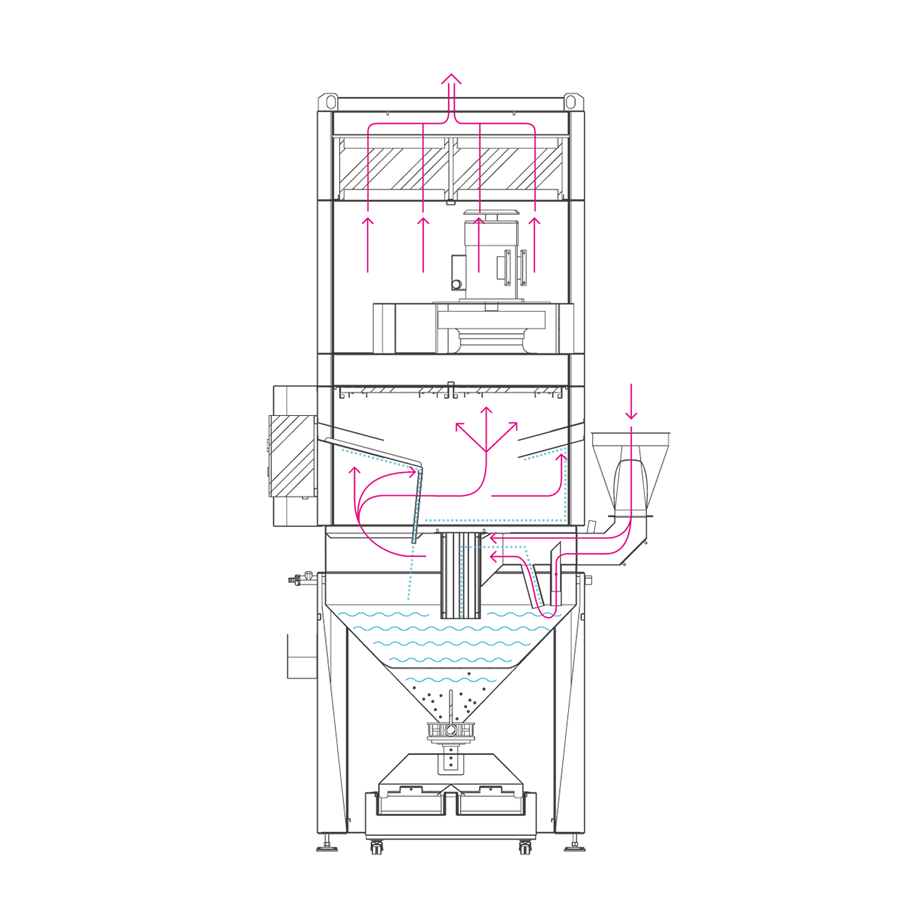
Functionality wet separator
The polluted air is extracted through a revolutionary multi-chamber system and dusts are separated in the water. Sparks and combustible dusts are extinguished by high air velocities and the use of water. The discharge is a solid sludge that must be disposed of in accordance with local regulations.
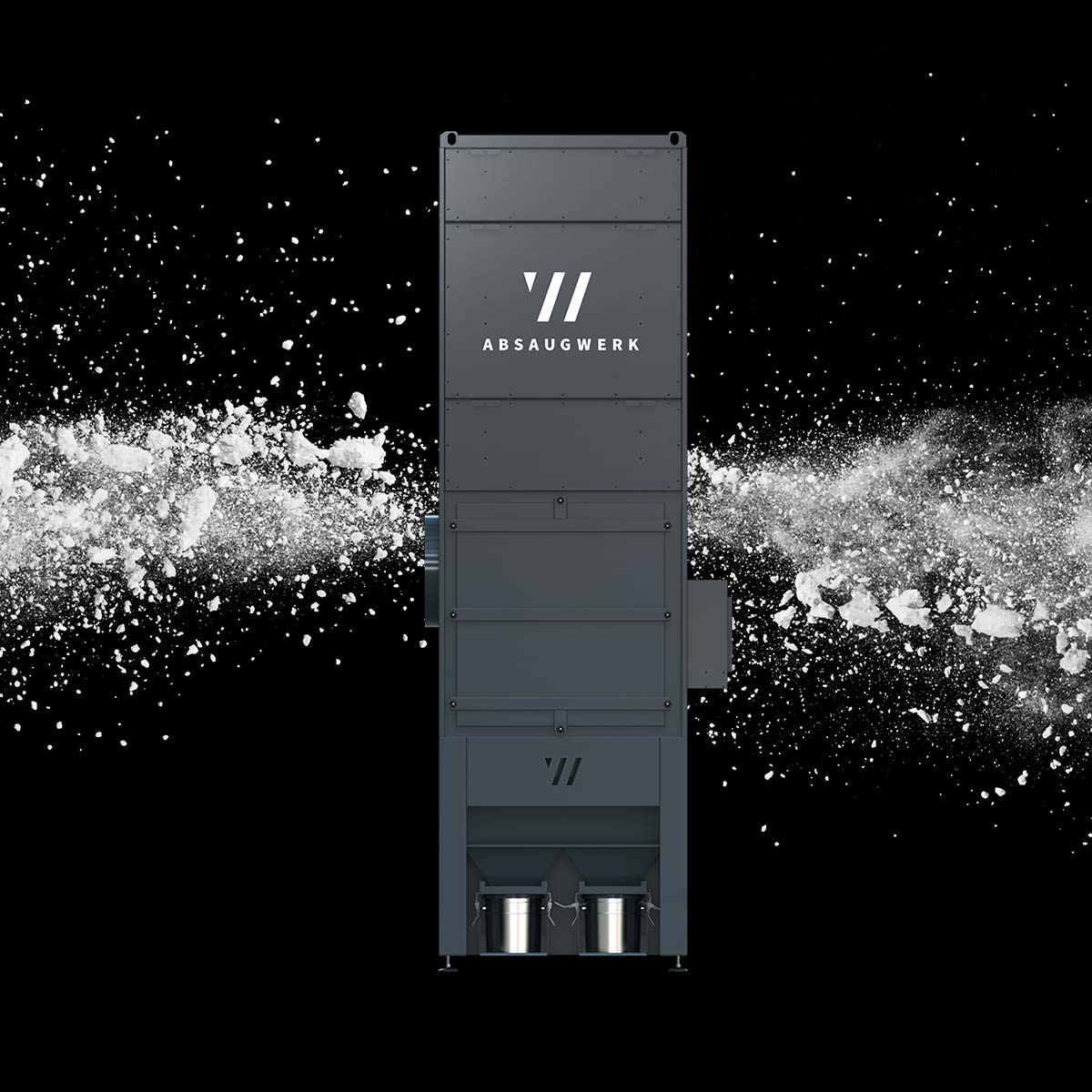
Dry separator suitable for dusts, granules, fibers, …
Application areas dry extraction
Dry deduster are all-purpose weapons in extraction technology and are suitable for numerous processes such as sawing, cutting, deburring and many more. Handling and disposal of the discharge is convenient and cost-effective, so dedusters are also ideal for processes with high air flow rates, such as those involved in mixing or filling. If the dusts are combustible or sparks are released, we integrate a radio sensor with an extinguishing agent device and other fire protection safety measures.
Advantages
- Very low operating costs
- Inexpensive & easy disposal of the discharge
- Numerous discharge variants
- Various pre-separators
- Wide range of configuration options
- Cleanable filters & minimal filter wear
- Low costs for wear parts
- Very high separation efficiency of approx. 99.9%(depending on particle size)
Cons
- Cost-intensive extinguishing equipment for combustible dusts required
- Acquisition costs initially more expensive than ATEX wet separators. 💡Compare operating costs!
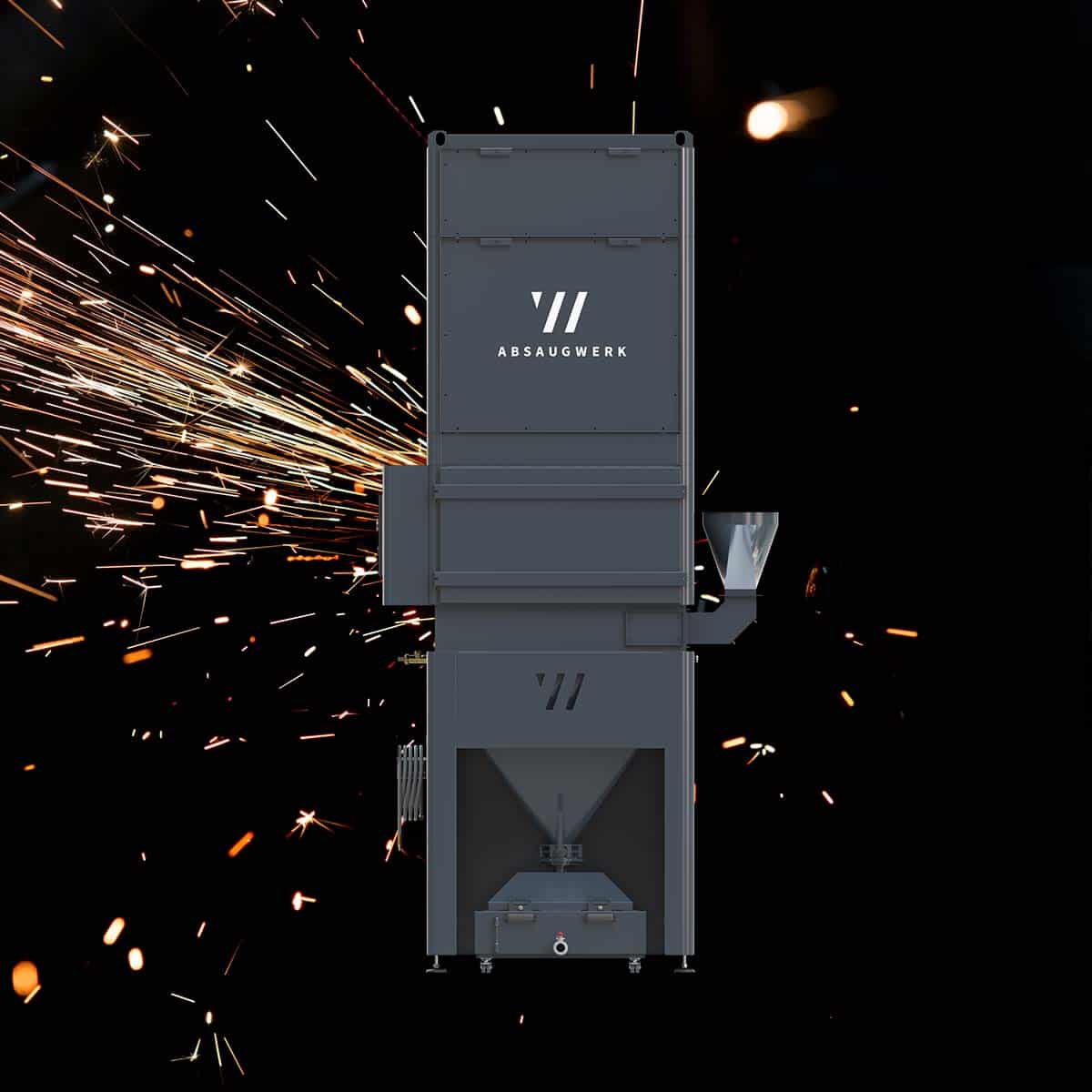
Wet separator suitable for explosive dusts and chips
Application areas wet extraction
Wet separators are filter systems that are optimally suited for separating explosive dusts due to their technical properties. Sparks are extinguished to a large extent by the high air velocity before the air flow reaches the water basin.
Advantages
- Minimal fire risk
- Low filter wear
- Ideal for sticky, sparking and wet materials
- ATEX version cheaper
Cons
- Higher cleaning and maintenance effort
- Higher disposal costs of the discharge
- Higher operating costs
Individual extraction systems for dry and wet separation
Our broad product portfolio ranges from deduster, fume filters, and wet separators to complete hall extraction systems or extraction cabins for a wide variety of industrial processes. We offer individual extraction solutions and suitable pipe systems for almost every area of application in manufacturing plants. The extraction systems are specially tailored to your process, which makes them particularly energy-saving and powerful.
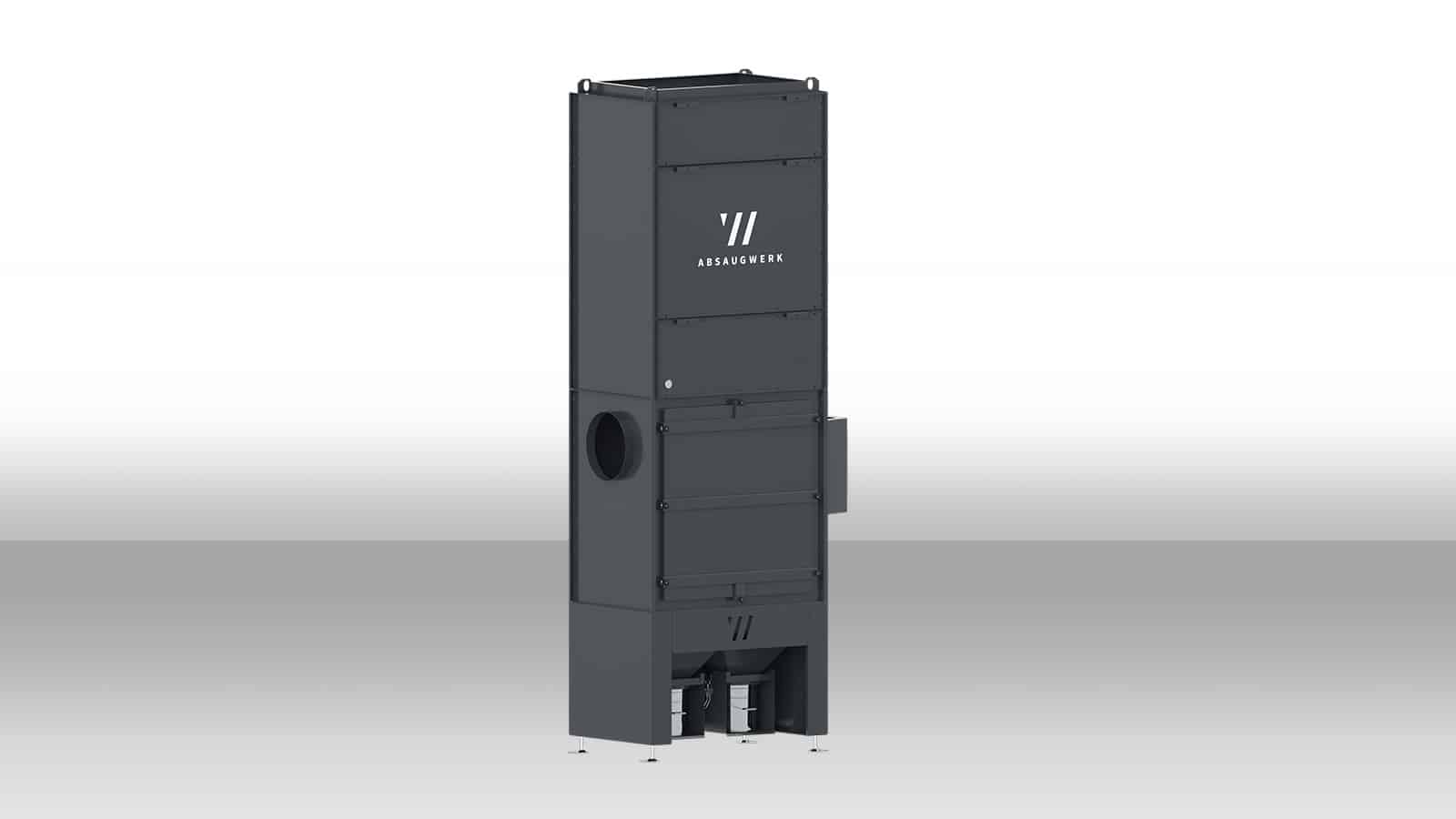
FUME FILTER
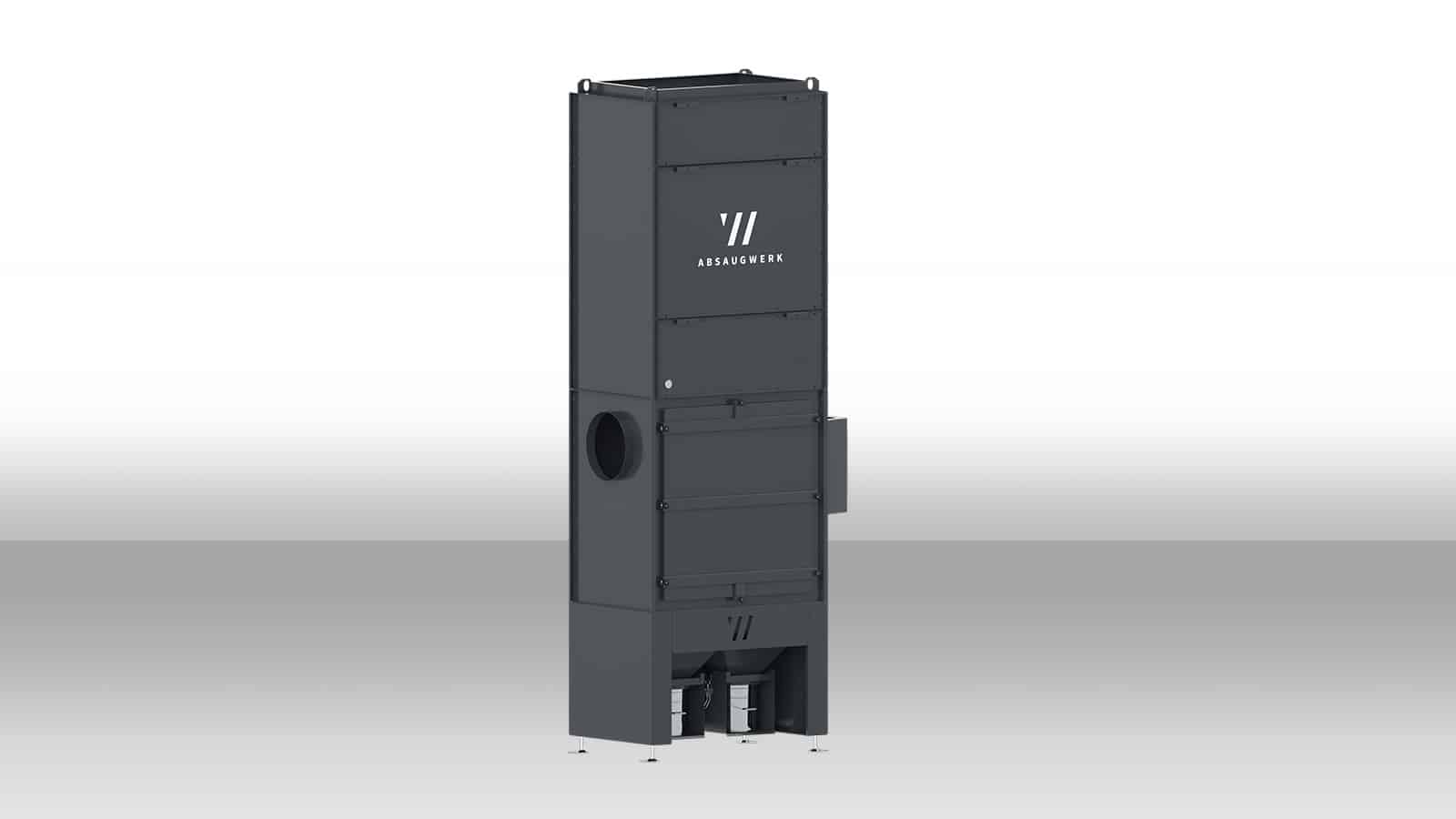
DEDUSTER
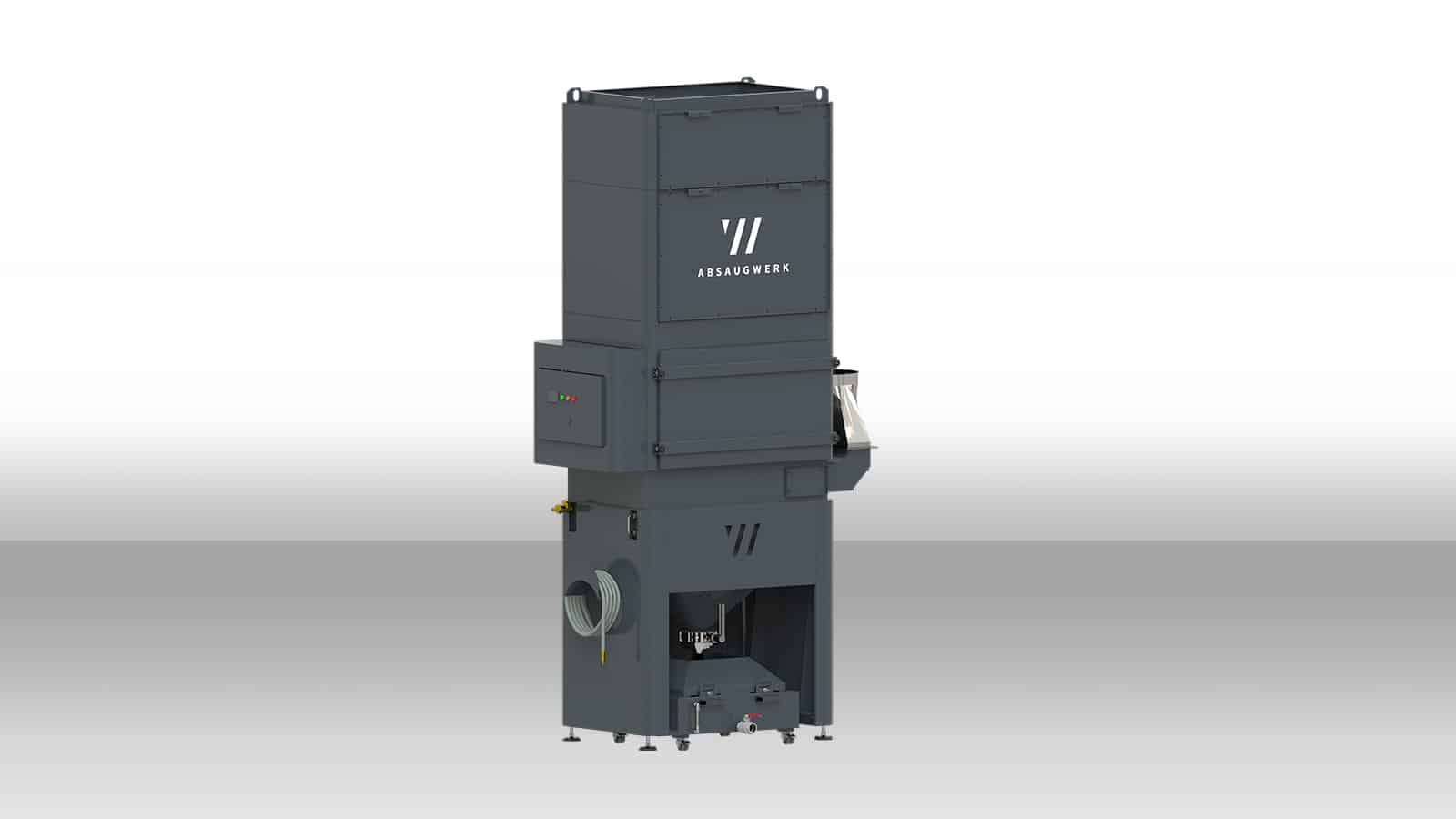
Wet separator
